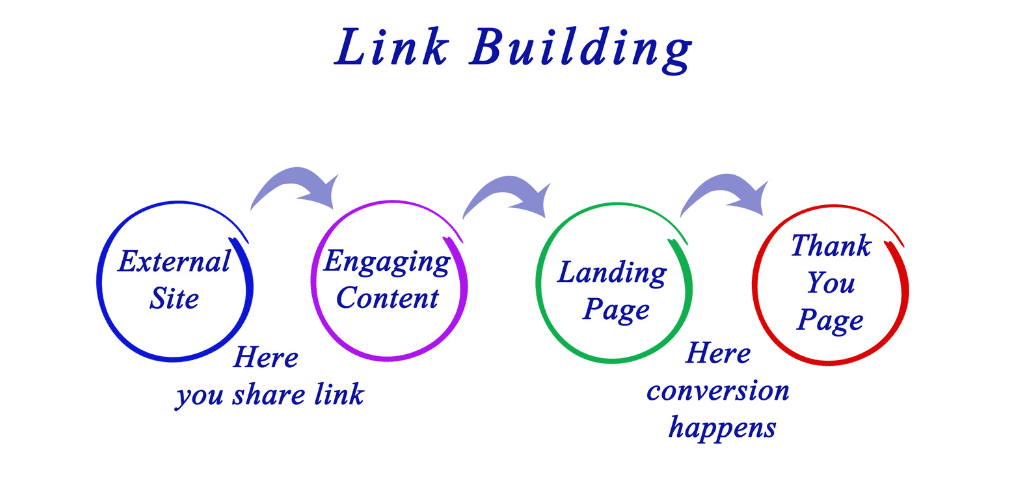Website authority is your site’s credibility score in the eyes of search engines like Google—and it directly impacts how well your pages rank in search results. This metric matters for SEO professionals, digital marketers, and website owners who want to understand why some sites consistently outrank their competitors.
Getting a handle on website authority helps you make smarter decisions about your SEO strategy and content creation. You’ll learn exactly how search engines calculate these authority scores and discover proven methods for building high-quality backlinks that actually move the needle.
We’ll break down the key differences between domain authority and page authority, show you practical ways to measure your current standing, and give you actionable steps to boost your site’s credibility over time.
Table of Contents
Understanding Website Authority Fundamentals
What is website authority?
Website authority represents the overall strength and trustworthiness of your website in the eyes of search engines and users. Think of it as your website’s reputation score – the digital equivalent of how much credibility your site holds within your industry or niche.
Search engines like Google evaluate website authority through complex algorithms that analyze hundreds of factors. These include the quality and quantity of backlinks pointing to your site, the relevance and depth of your content, user engagement metrics, technical performance, and your site’s overall trustworthiness signals.
Website authority isn’t just a single metric but rather a comprehensive assessment of your entire online presence. It encompasses both domain authority (your entire website’s strength) and page authority (individual page strength). The higher your website authority, the more likely your pages will rank prominently in search results for relevant queries.
The concept works on a foundation of trust and expertise. Search engines want to deliver the most reliable and valuable information to their users. Websites with higher authority have proven themselves through consistent quality content, positive user experiences, and endorsements from other reputable sites through backlinks.
What is a good website authority score?
Website authority scores typically range from 1 to 100, with higher numbers indicating stronger authority. Most SEO tools use this scale, though the specific metrics may vary between platforms like Moz’s Domain Authority, Ahrefs’ Domain Rating, or SEMrush’s Authority Score.
Here’s how website authority scores generally break down:
| Authority Score Range | Website Quality Level | Typical Examples |
|---|---|---|
| 1-20 | New or low-authority sites | Brand new websites, spam sites |
| 21-40 | Below average authority | Small local businesses, new blogs |
| 41-60 | Average authority | Established small businesses, niche blogs |
| 61-80 | High authority | Popular industry sites, regional news |
| 81-100 | Exceptional authority | Major brands, Wikipedia, CNN, Amazon |
Getting a score above 50 puts you in good territory for most small to medium businesses. Scores between 60-70 indicate strong authority that can compete effectively in many niches. Anything above 80 represents exceptional authority typically reserved for major brands and industry leaders.
Remember that website authority scores are relative. A score of 40 in a highly competitive industry like finance might be more valuable than a score of 60 in a less competitive niche. Focus on gradual improvement rather than chasing perfect scores.
Explore the relationship between authority and search rankings
The connection between website authority and search rankings runs deep into how search engines determine which pages deserve top positions. Higher authority websites consistently outperform lower authority sites in search results, even when the content quality might be comparable.
Search engines view authority as a trust signal. When authoritative sites link to your content or when you consistently publish valuable information, search algorithms interpret these as votes of confidence. This creates a snowball effect – higher authority leads to better rankings, which drives more traffic and potential backlinks, further boosting your authority.
Authority acts as a tiebreaker in competitive search landscapes. When multiple pages target the same keywords with similar content quality, the page from the higher authority domain typically wins the top spot. This explains why established websites often outrank newer competitors, even with less optimized content.
The relationship isn’t always linear, though. A high-authority site with poor content won’t automatically rank well. Search engines balance authority with relevance, user intent, and content quality. However, authority provides significant ranking momentum that’s hard to overcome without substantial effort.
Identify key metrics that measure website credibility
Several core metrics help evaluate and track your website’s credibility and authority development. Understanding these measurements gives you clear targets for improvement and progress tracking.
Backlink Profile Quality: The number and quality of websites linking to yours remains the strongest authority indicator. Focus on earning links from relevant, high-authority sites within your industry rather than accumulating low-quality links.
Domain Age and History: Older domains with clean histories typically carry more authority. While you can’t change your domain age, maintaining consistent quality over time builds accumulated trust.
Content Depth and Expertise: Search engines evaluate your content’s comprehensiveness, accuracy, and demonstration of expertise. Regular publication of in-depth, valuable content signals authority in your field.
User Engagement Signals: Metrics like time on site, bounce rate, and return visitor percentages indicate how users perceive your content value. Higher engagement suggests greater credibility.
Technical Performance: Site speed, mobile responsiveness, security certificates, and overall user experience contribute to perceived authority. Poor technical performance undermines credibility regardless of content quality.
Social Signals and Brand Mentions: While not direct ranking factors, social media engagement and brand mentions across the web contribute to overall authority assessment.
These metrics work together to create your authority profile. Improvement in any single area contributes to overall authority growth, but balanced development across all metrics produces the strongest results.
What is Domain Authority and Page Authority

What is domain authority in seo?
Domain authority is essentially your website’s report card in the eyes of search engines. Think of it as a score that predicts how well your entire website will rank in search results. When someone searches for information on Google, search engines need to decide which websites deserve to show up first. Domain authority helps them make that decision by measuring the overall trustworthiness and credibility of your site.
This SEO authority metric works like a reputation system. Websites with higher domain authority are more likely to rank higher in search results because search engines view them as reliable sources of information. The concept revolves around the idea that if many other reputable websites link to yours, your site must be valuable and trustworthy. Search engines use this as a signal to determine where your pages should appear when people search for relevant topics.
How is domain authority calculated?
Domain authority calculation happens through complex algorithms that analyze multiple ranking factors. The primary driver is your backlink profile – the collection of links pointing to your website from other sites. Search engines examine not just the quantity of these links, but their quality too. A single link from a highly respected news website carries more weight than dozens of links from low-quality directories.
The algorithm considers the authority of the websites linking to you. When a site with high domain authority links to your content, it passes some of its credibility to your website. This creates a network effect where authority flows from established sites to newer or smaller ones. The calculation also looks at the diversity of your backlink sources, the relevance of linking sites to your content, and how naturally these links appear within the linking pages.
Website authority scores get updated regularly as new links are discovered and existing ones are reevaluated. The system also considers factors like your site’s age, content quality, user engagement metrics, and technical SEO elements. All these signals combine to create a comprehensive picture of your website’s authority level.
Domain authority vs page authority what’s the difference?
Domain authority and page authority measure authority at different levels of your website. Domain authority looks at your entire website as a whole unit, while page authority focuses on individual pages within your site. Your domain authority represents the overall strength and credibility of your complete website, including all its pages, subdomains, and content.
Page authority, on the other hand, measures how likely a specific page is to rank well in search results. A single page on your website might have higher page authority than others if it has attracted more quality backlinks or contains particularly valuable content. Your homepage typically has the highest page authority because it receives the most internal and external links.
The relationship between these two metrics is interconnected. Strong individual pages contribute to higher domain authority, while a high domain authority website provides a foundation that helps individual pages perform better. When you build backlinks to specific pages, you’re improving both that page’s individual authority and your overall website authority. This dual benefit makes strategic link building particularly powerful for SEO success.
What is good domain authority score?
Domain authority scores typically range from 1 to 100, with higher numbers indicating stronger authority. A good domain authority score depends on your industry and competition level. For most small businesses and new websites, a domain authority score between 20 and 30 represents solid progress. Established businesses often see scores in the 30 to 50 range, while major brands and industry leaders frequently score above 60.
New websites usually start with very low domain authority scores, sometimes in single digits. This is completely normal and expected. Building website authority takes time, consistent effort, and quality content creation. What matters more than your absolute score is the upward trend over time and how you compare to direct competitors in your space.
Rather than fixating on reaching a specific number, focus on gradual improvement. Increasing your domain authority from 15 to 25 represents significant progress that should translate into better search rankings. The key is maintaining steady growth through legitimate SEO practices rather than trying to game the system with questionable tactics.
What is a good domain authority ranking?
Domain authority ranking success depends on your competitive landscape rather than absolute numbers. Your website authority score becomes meaningful when compared to others in your industry or niche. If your main competitors have domain authority scores around 35, then achieving a score of 40 puts you in a strong competitive position.
Industry context matters significantly when evaluating domain authority rankings. In highly competitive sectors like finance or technology, even established companies might find it challenging to reach domain authority scores above 50. Meanwhile, in less competitive niches, a domain authority score of 35 might place you among the top websites in your field.
Geographic factors also influence what constitutes good domain authority ranking. Local businesses competing primarily in their city or region don’t need the same authority levels as national or international companies. A local restaurant with a domain authority score of 25 might dominate local search results, while an e-commerce site targeting national customers would need much higher scores to compete effectively.
The most practical approach to evaluating your domain authority ranking involves researching your top 10 competitors and understanding where you stand relative to them. This competitive analysis gives you realistic targets and helps you understand what authority levels are necessary to achieve your ranking goals in your specific market.
How Search Engines Calculate Website Authority

Understanding What is Website Audit?
A website audit reveals how search engines actually evaluate your site’s authority. Think of it as a comprehensive health check that examines every factor contributing to your website authority score. This process involves crawling through your site’s technical infrastructure, content quality, and external reputation signals.
Search engines perform continuous audits of websites, analyzing hundreds of ranking factors simultaneously. They examine your site’s loading speed, mobile responsiveness, SSL certificates, and internal linking structure. These technical elements directly impact how algorithms calculate your domain authority and overall trustworthiness.
The audit process also evaluates content freshness, keyword relevance, and user engagement patterns. Search engines track metrics like bounce rate, time on page, and click-through rates to understand how visitors interact with your content. This behavioral data becomes part of your SEO authority metrics, influencing your position in search results.
Analyzing Google’s PageRank Algorithm and Its Evolution
Google’s PageRank algorithm laid the foundation for modern search engine authority calculations. Originally developed by Larry Page and Sergey Brin, PageRank treated the web like a massive voting system where each link represented a vote of confidence.
The algorithm assigned numerical values between 0 and 10, with higher scores indicating greater authority. However, Google discontinued public PageRank scores in 2016, though the core principles still influence rankings today. Modern authority calculations have become far more sophisticated than the original PageRank model.
Today’s algorithms consider link context, anchor text relevance, and the topical authority of linking domains. They distinguish between natural editorial links and manipulative link schemes. The evolution includes machine learning components that adapt to changing web patterns and user behavior.
Google now weighs hundreds of signals beyond simple link counting. These include:
- Link velocity: How quickly you gain or lose backlinks
- Link diversity: Variety in your backlink sources
- Temporal factors: When links were acquired
- Co-citation patterns: Sites mentioned alongside yours
Examining the Role of Backlinks in Authority Scoring
Backlinks remain the backbone of website authority calculations, but their evaluation has become incredibly nuanced. Search engines analyze the authority of linking domains, the relevance of linking pages, and the context surrounding each link placement.
Backlink authority transfers differently based on several factors. Links from high-authority domains in your industry carry more weight than generic directory submissions. The linking page’s own authority, topical relevance, and link placement all influence the authority transfer.
Search engines also evaluate link neighborhoods – the other sites linked from the same page. If you’re linked alongside reputable sources, it strengthens your authority signal. Conversely, links from pages that also link to spammy sites can diminish the value.
The anchor text diversity in your backlink profile affects authority calculations. Natural link profiles contain varied anchor texts including branded terms, naked URLs, and generic phrases. Over-optimization with exact-match keywords can actually harm your authority scores.
Understanding Content Quality Signals and User Engagement Metrics
Content quality directly impacts how website authority works in search algorithms. Search engines evaluate content depth, originality, and expertise signals to determine topical authority. They analyze factors like content length, readability, and citation patterns.
User engagement metrics provide real-time feedback about content value. Search engines track:
- Dwell time: How long users stay on your pages
- Pogo-sticking: Users quickly returning to search results
- Social signals: Shares, comments, and engagement rates
- Return visits: Users coming back to your content
These behavioral signals help search engines understand content satisfaction and relevance. Pages that consistently engage users build stronger authority signals over time.
Discovering How Technical SEO Factors Influence Authority Scores
Technical SEO creates the foundation for strong website authority. Search engines prioritize sites that provide excellent user experiences through fast loading times, mobile optimization, and secure connections.
Core Web Vitals have become critical authority factors. These metrics measure loading performance, interactivity, and visual stability. Sites that excel in these areas often see improved authority scores and rankings.
Technical factors affecting authority include:
| Factor | Impact on Authority |
|---|---|
| Site Speed | High impact on user experience signals |
| Mobile Optimization | Essential for modern authority calculations |
| SSL Certificate | Basic trust signal requirement |
| Internal Linking | Distributes authority throughout your site |
| Crawlability | Ensures search engines can evaluate your content |
Structured data markup helps search engines understand your content context, potentially boosting topical authority signals. Clean URL structures and proper redirects maintain authority flow during site changes.
Building High-Quality Backlinks for Authority Growth

Identify Valuable Link-Building Opportunities and Strategies
The foundation of building website authority lies in securing backlinks from reputable sources within your industry. Start by analyzing your competitors’ backlink profiles using tools like Ahrefs, SEMrush, or Moz. This research reveals where your competitors earn their most valuable links, giving you a roadmap of potential opportunities.
Resource pages represent goldmines for link building. These pages exist specifically to curate helpful links for readers. Search for terms like “resources,” “useful links,” or “helpful tools” combined with your industry keywords. When you find relevant resource pages, reach out with a personalized email explaining how your content would benefit their audience.
Broken link building offers another powerful strategy. Use tools to identify broken links on websites in your niche, then create or identify existing content that could serve as a replacement. Contact the website owner, inform them about the broken link, and suggest your content as an alternative.
Industry directories and local business listings provide consistent opportunities for backlink authority growth. Focus on high-quality directories specific to your industry rather than generic link farms. Professional associations, chambers of commerce, and industry-specific platforms often offer valuable linking opportunities.
Create Link-Worthy Content That Attracts Natural Backlinks
Content that naturally attracts backlinks saves you from constant outreach efforts while building genuine website authority. Original research and data-driven content consistently earn links because other websites reference your findings. Conduct surveys within your industry, analyze trends, or compile statistics that others can cite.
Comprehensive guides and tutorials become go-to resources that people naturally link to. These pieces should solve real problems and provide actionable value. When creating guides, include step-by-step instructions, screenshots, templates, or tools that make implementation easier for readers.
Infographics and visual content earn links across diverse platforms. People share visual content more frequently than text-only pieces, and bloggers often embed infographics while linking back to the source. Create visually appealing graphics that summarize complex information or present data in digestible formats.
Interactive tools and calculators attract links because they provide unique value that can’t be found elsewhere. Whether it’s a ROI calculator, assessment quiz, or comparison tool, interactive elements encourage both linking and social sharing. These resources often earn ongoing links long after publication.
Leverage Guest Posting and Partnership Opportunities
Guest posting remains one of the most effective methods for building domain authority when executed properly. Focus on quality over quantity by targeting websites with strong authority scores and engaged audiences. Research publications that your target audience reads and pitch unique, valuable content ideas rather than recycled material.
Develop relationships with editors and content managers before pitching. Follow their content, engage with their social media posts, and understand their publication style. When you do pitch, personalize each outreach email and demonstrate familiarity with their recent content.
Partnership opportunities extend beyond traditional guest posting. Consider podcast appearances, webinar collaborations, or co-created content pieces. These partnerships often result in natural backlinks while exposing your brand to new audiences. Joint ventures like research projects or industry reports create multiple linking opportunities across participating organizations.
Influencer collaborations can generate valuable backlinks when structured properly. Instead of paying for sponsored posts, create genuinely valuable content that influencers want to share and reference. This approach builds more authentic relationships and earns links that carry greater SEO authority.
Monitor and Disavow Harmful or Low-Quality Links
Regular backlink auditing protects your website authority from potential penalties. Use Google Search Console, Ahrefs, or similar tools to monitor your backlink profile monthly. Look for sudden spikes in low-quality links, which might indicate negative SEO attacks or automated link building gone wrong.
Identify toxic links by examining factors like domain authority scores, relevance to your industry, and linking context. Links from gambling sites, adult content, or obviously spammy directories can harm your website authority. Pay attention to patterns of links with identical anchor text or links from networks of interconnected low-quality sites.
The disavow process requires careful documentation. Create a comprehensive list of harmful domains and individual URLs you want Google to ignore. Use the disavow file format specified by Google, and submit it through Google Search Console. Remember that disavowing should be a last resort after attempting to remove harmful links manually.
Track the impact of your disavow efforts over time. Monitor your website authority metrics and organic search performance to ensure the disavow process improves rather than harms your rankings. Some links that appear low-quality might actually provide value, so approach disavowing with caution and data-driven decision making.
Measuring and Tracking Your Website Authority Progress

Use essential tools to monitor authority metrics
Tracking your website authority requires the right set of tools to get accurate, actionable data. Several industry-standard platforms provide comprehensive insights into your domain authority and page authority metrics.
Moz Pro stands out as the original creator of Domain Authority scoring. Their Link Explorer tool gives you detailed breakdowns of your website authority score, linking domains, and spam score analysis. The platform updates domain authority metrics regularly and provides historical data to track your progress over time.
Ahrefs offers Domain Rating (DR) as their authority metric, along with extensive backlink analysis tools. Their Site Explorer feature shows you exactly which pages are driving the most authority to your site and helps identify link-building opportunities. The tool also provides detailed competitor analysis features that reveal authority gaps you can exploit.
SEMrush combines authority tracking with keyword performance data through their Authority Score metric. This platform excels at showing how your website authority correlates with search rankings and organic traffic growth. Their Position Tracking tool lets you monitor authority changes alongside ranking fluctuations.
Majestic SEO focuses specifically on link intelligence with their Trust Flow and Citation Flow metrics. These measurements provide a different perspective on website authority by evaluating both the quantity and quality of your backlink profile.
For budget-conscious website owners, free tools like Moz’s Link Explorer (limited version), Google Search Console, and Ubersuggest provide basic authority insights. While these don’t offer the same depth as premium tools, they give you enough data to understand your baseline authority levels.
Most authority tracking tools update their metrics monthly, so don’t expect daily fluctuations. Set up automated reports to receive regular updates without manually checking each platform constantly.
Set realistic benchmarks and improvement timelines
Building website authority requires patience and strategic planning. New websites typically start with domain authority scores between 1-10, while established sites with strong backlink profiles can reach 40-60+. Understanding these baselines helps set achievable goals.
Timeline expectations vary significantly based on your starting point and resources. New domains often see their first meaningful authority increases within 3-6 months of consistent link building and content creation. Established websites with existing authority can expect gradual improvements over 6-12 month periods.
Monthly authority gains of 2-5 points are realistic for most websites actively working on SEO authority metrics. Expecting jumps of 10+ points monthly often leads to disappointment and questionable tactics that can harm long-term growth.
Industry benchmarks provide helpful context for your goals:
- Local businesses: 15-25 DA is competitive
- E-commerce sites: 25-40 DA shows strong market presence
- SaaS companies: 30-50 DA indicates industry authority
- Media/Publishing: 40-70+ DA reflects content authority
Create specific milestones like “increase domain authority from 15 to 20 within 6 months” rather than vague goals like “improve authority.” This approach makes progress measurable and keeps your team focused on achievable outcomes.
Factor in seasonal fluctuations and algorithm updates that might temporarily impact your authority scores. Building authority is more marathon than sprint, so consistency trumps quick fixes every time.
Analyze competitor authority levels for strategic insights
Understanding your competitors’ website authority reveals opportunities and helps prioritize your SEO efforts. Start by identifying 5-10 direct competitors who rank for your target keywords and serve similar audiences.
Authority gap analysis shows you exactly where competitors have advantages. If a competitor has domain authority of 45 while yours sits at 25, examine their backlink profile to understand the difference. Look for patterns in their link sources, content types that attract links, and partnerships that boost their authority.
Backlink source analysis reveals untapped opportunities in your niche. When competitors consistently get links from specific industry publications, trade associations, or resource pages, these become targets for your own outreach campaigns. Tools like Ahrefs and SEMrush make it easy to export competitor backlink lists for prospecting.
Content authority patterns emerge when you study which competitor pages have the highest page authority scores. These insights guide your content strategy by showing what topics and formats generate the most linking activity in your space.
Link velocity comparison helps you understand how quickly competitors build authority over time. If they’re gaining 20+ new referring domains monthly while you’re adding 5, you need to scale your link building efforts or improve your content quality to compete effectively.
Create a simple tracking spreadsheet with competitor domain authority scores, top linking domains, and recent authority changes. Review this data quarterly to spot trends and adjust your strategy accordingly. Remember that authority building is relative – if competitors improve faster than you, your rankings can suffer even if your absolute authority increases.
FAQ’s
What is the website authority?
Website authority represents a search engine’s trust and confidence in your website’s credibility and expertise. Think of it like a reputation score that tells search engines how reliable and valuable your content is compared to other websites in your niche. When search engines like Google evaluate your site, they look at various factors including the quality of websites linking to you, how fresh and relevant your content is, and how users interact with your pages.
Domain authority and page authority work together to create your overall website authority score. Domain authority measures the strength of your entire website, while page authority focuses on individual pages. These SEO authority metrics help search engines decide where to rank your content in search results. A website with higher authority typically appears closer to the top of search results because search engines view it as more trustworthy and valuable to users.
The concept goes beyond just numbers on a dashboard. Website authority reflects real-world credibility that comes from consistently publishing quality content, earning respect from other websites through backlinks, and providing genuine value to your audience. Search engines have become sophisticated at recognizing authentic authority versus artificially inflated metrics.
What is a good website authority?
A good website authority score depends on your industry and competition level. Generally speaking, domain authority scores range from 1 to 100, with higher numbers indicating stronger authority. New websites typically start with very low scores around 1-10, which is completely normal. Small local businesses often see good results with domain authority scores between 20-30, while established companies might aim for 40-60.
The key is understanding that website authority is relative to your competitors. A score of 35 might be excellent in a niche market but modest in highly competitive industries like finance or technology. Rather than obsessing over reaching a specific number, focus on steadily improving your score over time through quality content and legitimate backlink building.
What matters most is the upward trend of your website authority score. Consistent growth over months and years indicates you’re building genuine authority that search engines recognize. A website moving from 15 to 25 domain authority over six months shows much better progress than one that remains stuck at 40 for years.
How to check website authority?
Checking your website authority is straightforward with several reliable tools available. Moz offers a free domain authority checker that provides both domain authority and page authority scores. Simply enter your website URL and get instant results showing your current authority metrics along with helpful insights about your link profile.
Other popular tools include Ahrefs’ Domain Rating checker, SEMrush’s Authority Score, and Majestic’s Trust Flow metrics. Each tool uses slightly different algorithms, so you might see varying numbers, but they all measure similar concepts of website credibility and link strength. Many SEO professionals use multiple tools to get a complete picture of their website authority.
Most authority checking tools also provide additional valuable information like the number of backlinks pointing to your site, referring domains, and how your authority compares to competitors. Some tools offer free limited checks, while others require subscriptions for detailed analysis. Start with free tools to understand your baseline, then consider paid options as your SEO efforts become more sophisticated.
What is the role of site authority?
Site authority plays a central role in how search engines evaluate and rank your website in search results. When someone searches for information related to your industry, search engines use authority as a major ranking factor to determine which websites deserve top positions. Higher authority websites generally receive more organic traffic because they appear higher in search results where users are most likely to click.
Beyond search rankings, website authority influences user trust and credibility. People naturally gravitate toward websites that appear authoritative and trustworthy. A strong authority score often correlates with better user engagement metrics like longer time on site, lower bounce rates, and higher conversion rates. This creates a positive cycle where authority helps attract visitors who then engage more deeply with your content.
Search engine authority also affects how quickly new content gets indexed and how well it performs in rankings. Websites with established authority often see their new pages rank faster and higher than identical content on lower-authority sites. This advantage compounds over time, making authority-building efforts increasingly valuable as your website grows and matures in search engine databases.
Conclusion
Website authority isn’t just some mysterious ranking factor that exists in the background of search engines. It’s the digital reputation your site builds over time through quality content, trustworthy backlinks, and consistent user experiences. When you focus on creating valuable content that other reputable sites want to link to, you’re essentially building your site’s credibility in the eyes of both users and search algorithms. The metrics like Domain Authority and Page Authority give you a helpful snapshot of where you stand, but they’re just numbers reflecting the real work you put into your site.
Building website authority takes time and patience, but the payoff is worth it. Start by auditing your current backlink profile and identifying opportunities to earn links from relevant, high-quality sources. Create content that answers real questions your audience has, and don’t forget to track your progress using the tools and metrics we’ve covered. Remember, authority isn’t built overnight, but every quality piece of content and every legitimate backlink you earn moves you closer to becoming a trusted voice in your industry.






